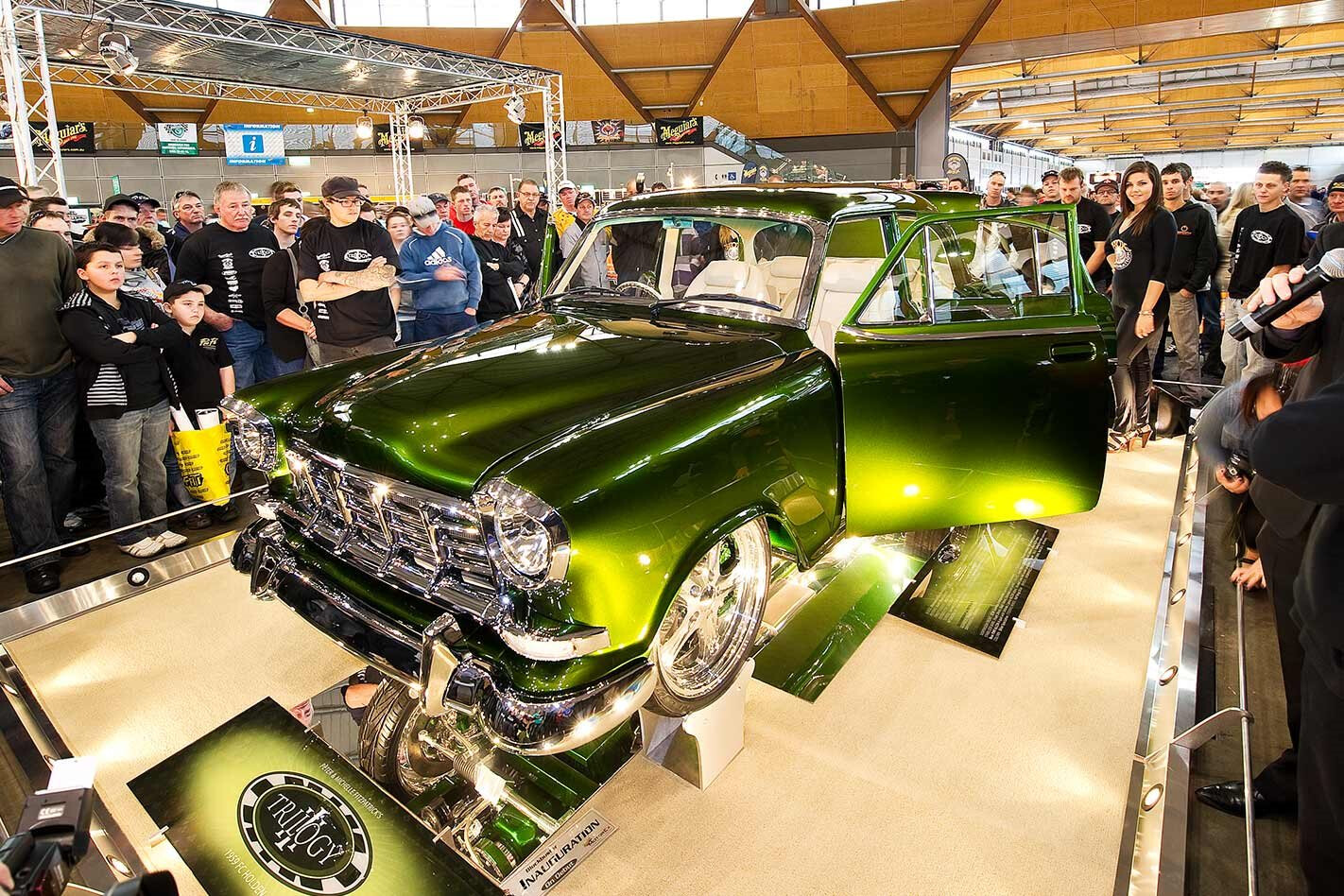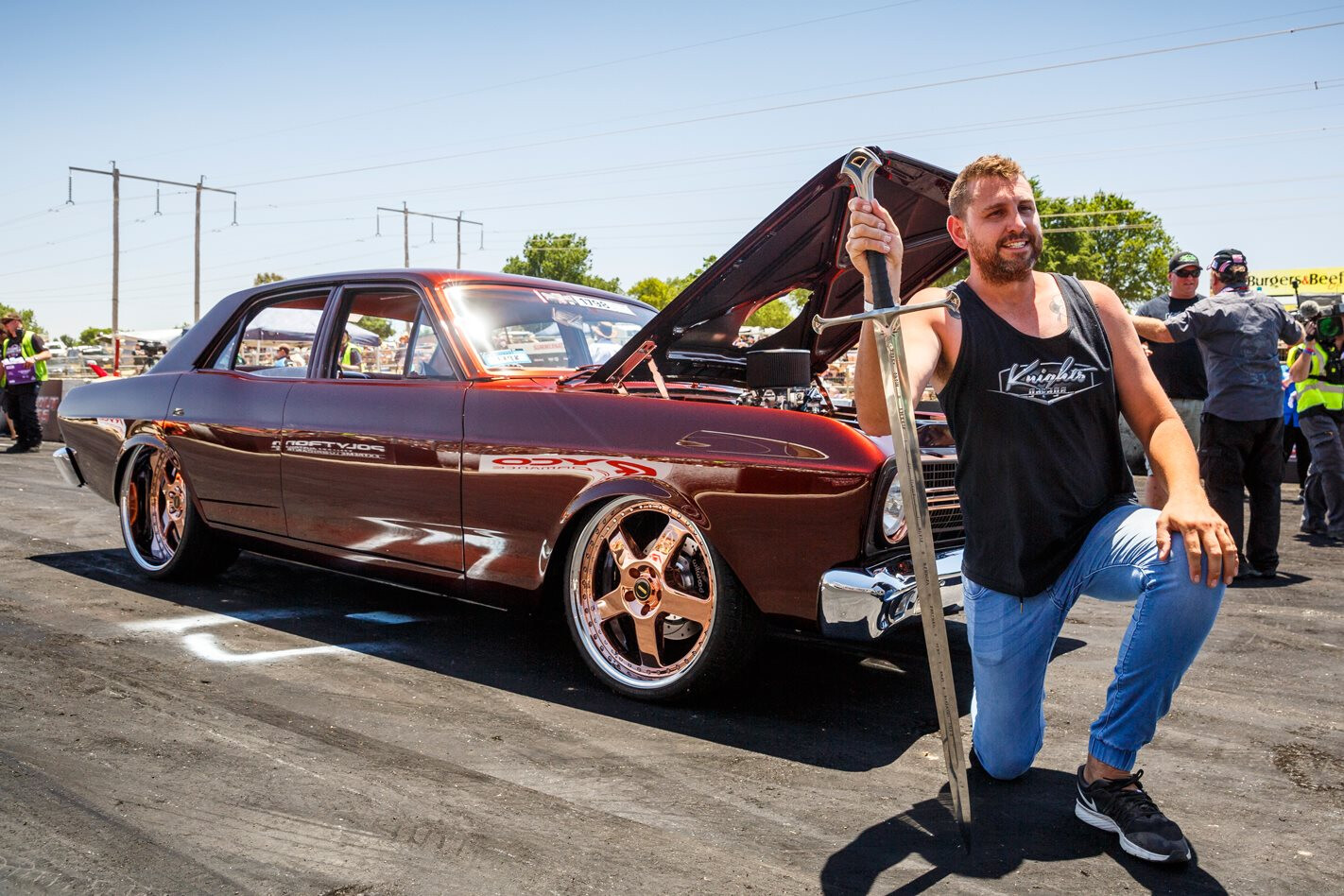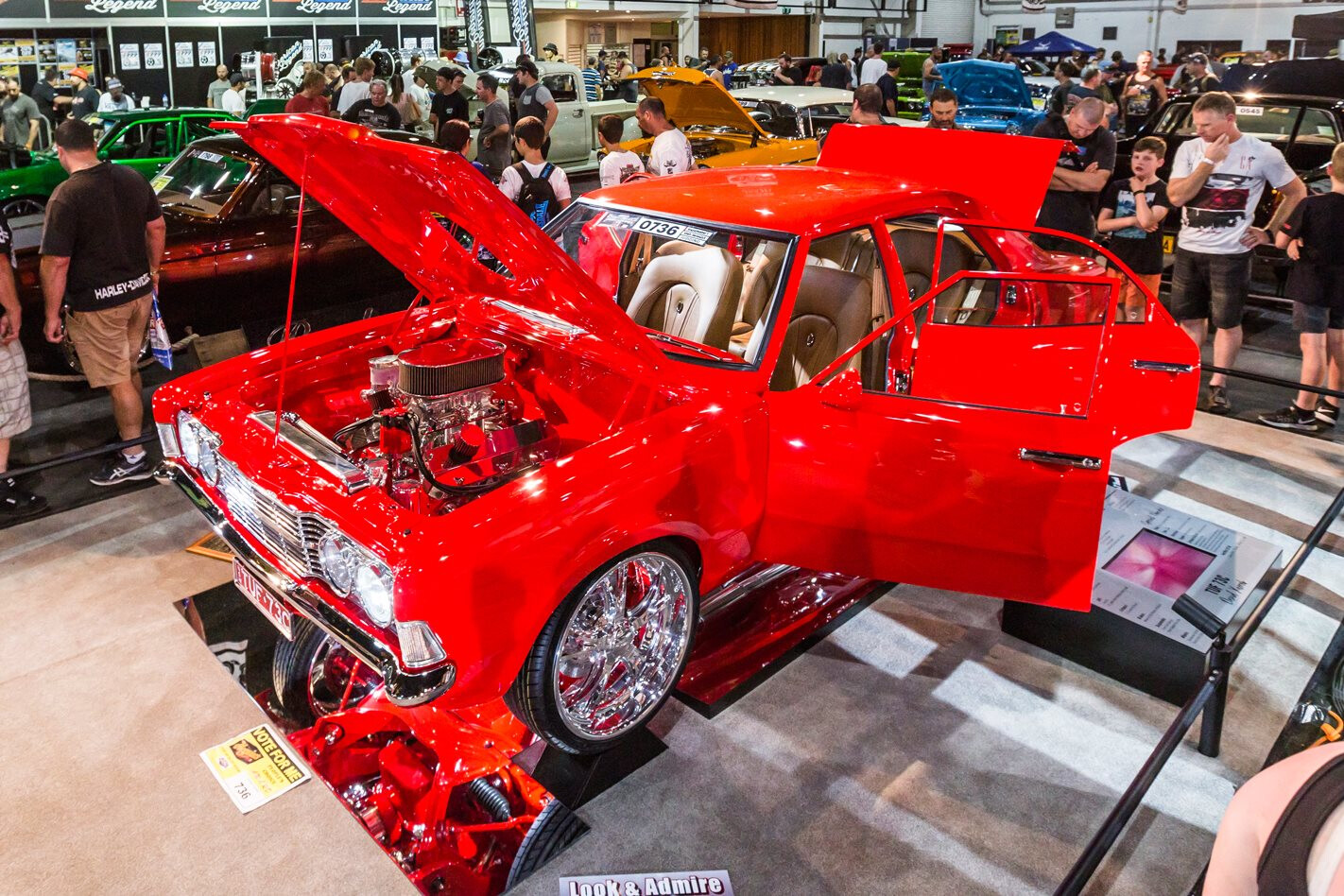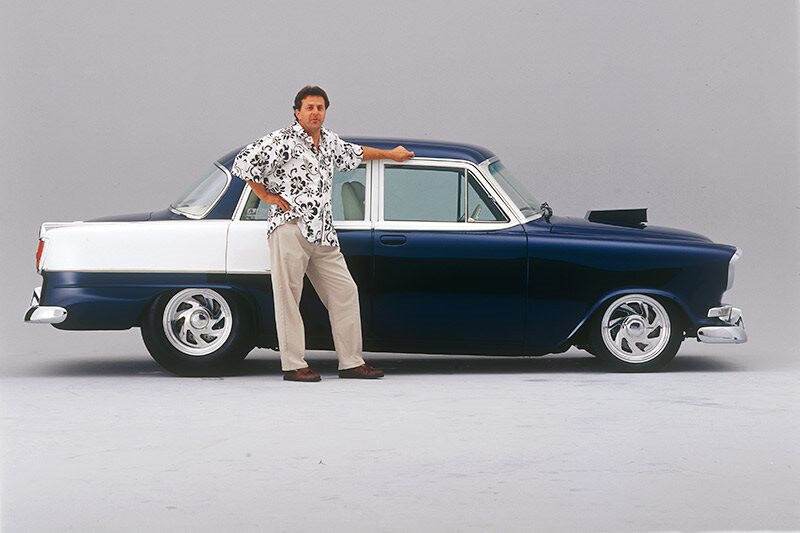This article was originally published in the March 2014 issue of Street Machine
FEW elite competitors have had as much success on the Aussie street machine scene as Peter Fitzpatrick. His list of achievements are truly impressive; MotorEx Superstar of the Decade, six-time Summernats Grand Champion, Summernats Top Judged and Street Machine of the Year. No one else has a record as impressive as this. And competing at the top level for more than 20 years means Fitzy knows a thing or two about preparing a car for a big show.
Hardly anyone outside those competing at the top-end of elite have any idea of the sheer amount of hours that go into preparation and maintenance. Peter attributes some of his success to his painstaking preparation. “The way I see it, if I present the car the best I possibly can, the judges will appreciate that and score the car accordingly,” he says. It’s hard to argue with his logic – or his success.
A MATTER OF TIME
So what is involved in preparing a prizewinning car? The short answer is lots of cleaning.
Pete points out that it varies a lot. If it’s just come back from the painter’s, you’re looking at more than a couple of hundred hours: “I timed it. We spent 105 hours alone just flat-rubbing and buffing Trilogy’s floor. Then there were the exterior panels, painted interior sections, plus assembly on top of that. All up it would have been well over 300 hours.”
Once you’ve got it up there, Pete still feels there’s a minimum of 50 hours between big shows, even if you don’t use the car. “They get dusty and grimy just sitting there,” he says. He never puts his cars away dirty; you’ve got to get them clean before replacing the cover – which should be periodically dry-cleaned. “Even after a couple of weeks, you pull the covers off and think to yourself, ‘hmm, that’s lost a bit of pop’.” So its into the polish again.
Besides, the body is the first thing the punters see, and these older cars look great with schmick paint and gleaming chrome.
ALL WASHED UP
“My problem is I like driving them,” Fitzy says. “In fact, I won’t take a car to a show that I can’t drive.” Due to its lack of inner guards, driving Trilogy creates a whole world of pain because “shit gets thrown up in there everywhere”. But he feels it’s worth it.
Once dirty, he finds old fashioned soap and water works best – with a new cloth each time, which is then delegated to another cleaning duty. “I go through a lot of cloths, but considering how much time and effort goes into the paint, it’s worth it.” And a Pete tip: after washing your cleaning cloths, hang them up indoors, out of the sun, as that keeps them soft. For a normal wash, a good wash ‘n’ wax is the go. But a couple of times a year, he’ll break out the truck wash and do the whole car, including the engine, suspension and underneath: “The wax builds up after a while, which gives the paint a yuk look. So I like the truck wash as it strips it all away and I can start over.” The car is then re-washed with a high-quality wash ‘n’ wax to get rid of all the truck wash and to give the paint a little bit of protection.
STANDING AROUND
A typical clean starts by getting the car up on stands and taking off the wheels. “People often forget wheels have two sides; you’ve got to do the insides as well.” After scrubbing the treads and the sidewalls – never using a silicone tyre shine: “I don’t let that shit anywhere near my cars” – Pete moves up into the wheel tubs.
Before buffing near chrome, stainless or billet, the items are either taped-up or removed. “Things like headlights and tail-lights are easy, but it’s a bugger to remove the grille because of all the hidden fasteners.” He finds stainless to be the most vulnerable: “Hit a stainless mould a bit the wrong way with the buff and it’ll scratch.”
RUB-A-DUB
There’s only one way to make stuff shiny: rub it, then rub it again, then rub it some more. “It’s always good to have a couple of people around who are good on the buff,” Fitzy reckons. And it’s not just the body panels. “Look up inside my guards, the paint finish and the shine is as good as in the middle of the quarter. We use this tiny little buff to do all the interior paintwork.”
But “you can’t polish a turd” he warns. “You have to start thinking about this stuff early on. If the painter doesn’t prep properly, it doesn’t matter how much you buff the car, it won’t ever look good.”
Any elite car will be cut and buffed numerous times, so adding a few extra coats of clear is a must.
And, while Pete’s never deliberately built any part of Trilogy with ease of cleaning in mind, he does admit its lack of sharp edges and smooth undercarriage has certainly made keeping it clean a whole lot easier.
MIGHTY METAL
A lot of people think you can hit chrome with whatever you like, but you’ve got to look after it, as you would your paint. If it’s good to start with, clean with window cleaner, followed by a good body wax; it makes it shine great, and gives it some protection.
“Billet looks great – that’s why we all love it – but it’s a bitch to look after. You can polish it at home and by the time you get to the show it’s already started to yellow.” Only use a specific billet polish, but it will never look as good as it does straight off the machine. During assembly, Pete will run everything on the buff one last time. And, if need be, he’ll periodically unbolt stuff and run it on the machine.
I SPY
As a judge approaches a car, they can determine if all the easy stuff is right – or not. But the first place they’ll go is all those hard-to-get-at areas. “It never ceases to amaze me – I see some guys go to all this trouble, yet I wander over and you can clearly see where water has run down inside the door when it was rubbed back.” Other areas to consider are inside door jambs, and in and around door hinges. Yes, it can be nightmarish getting in there and getting them clean, but the judges know that. They’ll definitely be shining a torch in there to see how good a job you did. “If you can see it, they’ll definitely find it,” Fitzy says.
INSIDE JOB
Get yourself a vacuum that really sucks; industrial types work a treat. And keep the leather-conditioner up to all the cow hide.
Fitzy suggests you run over the seats and carpet with a damp chamois – he’s astounded at how much stuff the damp chamois will drag out of the carpet – but make sure not to use that chamois for anything else.
You’ve got to be very careful what you use on suede as many cleaners just spread the dirt. Turps is best – it’s also good for getting rid of glue.
LAST BUT NOT LEAST
Clean the rubbers before the glass – the glass is always last. You have to do the glass twice, with a green-coloured micro-fibre cloth. Spray on, wipe off, then finish with a dry cloth – repeat process twice. And don’t forget to wind the windows down so that you do the tops first.
Finally, Pete’s wife, Michelle, gets involved. She goes around finding all the spots that have been missed.
So that’s Mr Fitzpatrick’s routine for preparing a top-end elite car. At the end of the day, this stuff is not all that hard, but it is painstaking.
Considering how well Pete’s done lately, a few of his competitors might be contemplating hiring Michelle as a consultant; her quality control seems to be right on the money.
STEP-BY-STEP:
1. Most people get the easy stuff right, but it’s all the fiddly hard-to-get at areas that the judges will concentrate on – therefore, so should you.
2. On the big cleans, remove as much as possible – headlight surrounds, tail-lights and side moulds – as there’s less risk of damaging them with the buff and you’re guaranteed to have no buffing compound left behind.
3. “My painter Trevor Davis and Justin Gadner from Detail FX are good on the buff,” Fitzy says. “I rely on them to do the final paint connection and achieve the finish I’m after.”
4. The buff will not only mark your rubbers, but will leave buffing compound under them that’s near-impossible to remove, so mask everything up.
5. Pete’s shop has a couple of dedicated wax pads for the exterior body work. They get wrapped in plastic between uses – and do not get used for anything else.
6. When buffing compound dries, it’s a bugger to remove. A little Quik Detailer, a cloth and a toothpick will get into a lot of nooks and crannies.
7. Polishing all the billet is the least popular job because it makes such a mess – black stuff gets everywhere.
8. Fitzy reckons you should look after your chrome like you would your paint. Window-cleaner followed by a good wax really makes it shine.
9. Do enough rubbing and cleaning and you’ll literally wear your fingers away. There’s a reason the saying mentions ‘blood, sweat and tears.’
10. Good old-fashioned compressed air is great for dislodging dust from inaccessible areas.
11. As well as toothpicks, Pete finds a long-hair artists’s brush or dagger-line pin-striping brush to be invaluable.
12. Get your torch and start going over the car inch by inch – that’s what the judges will be doing.
13. After all that work, the last thing you want to do is drive through a couple of hours of inclement weather and make it all filthy again – so a sealed trailer (and suitable tow vehicle) is pretty much essential for any elite car owner.
14. There’s as much attention to detail required in setting up the stand as there is in preparing the car. A poorly prepared stand can ruin a show car’s impact.




Comments